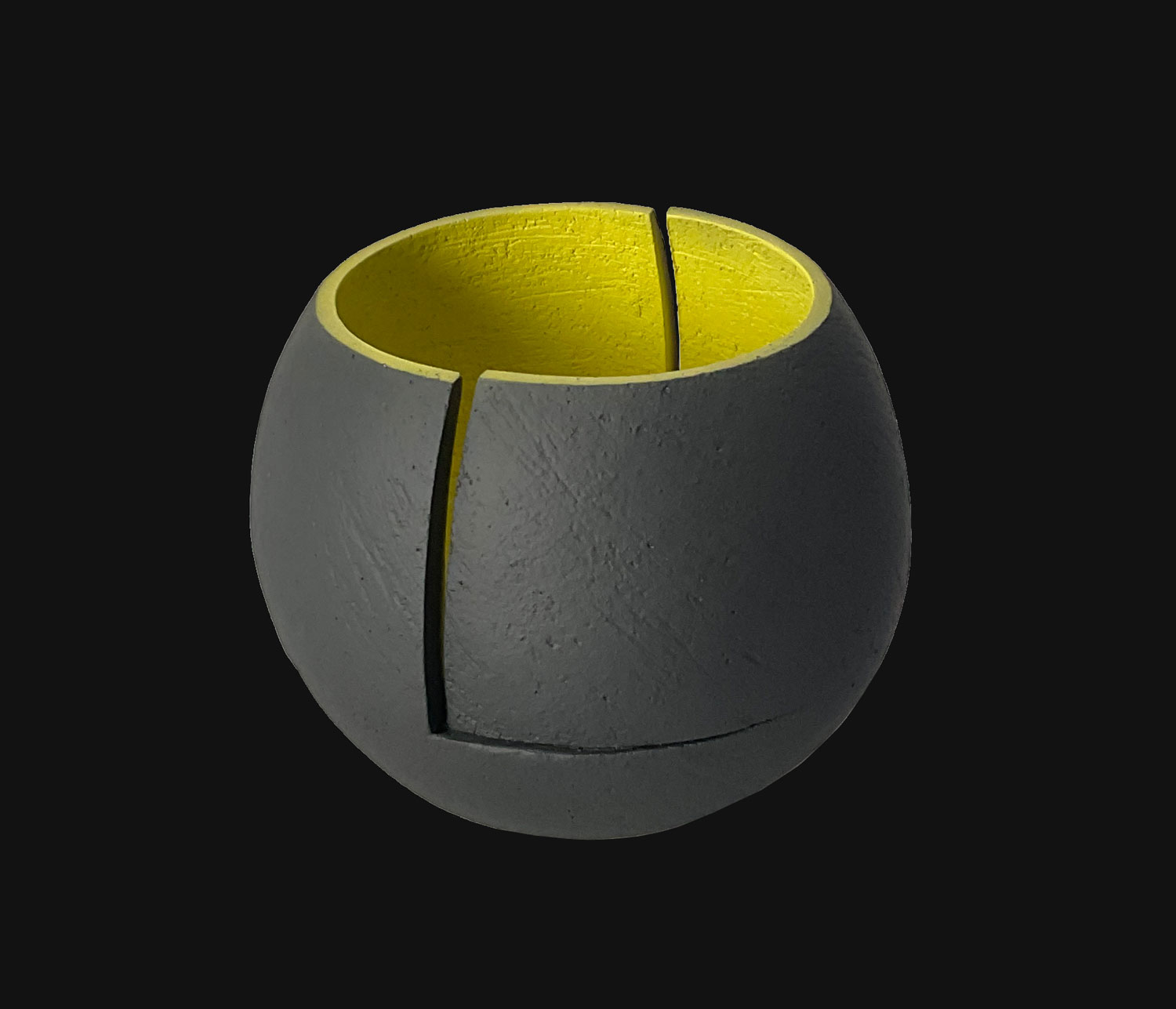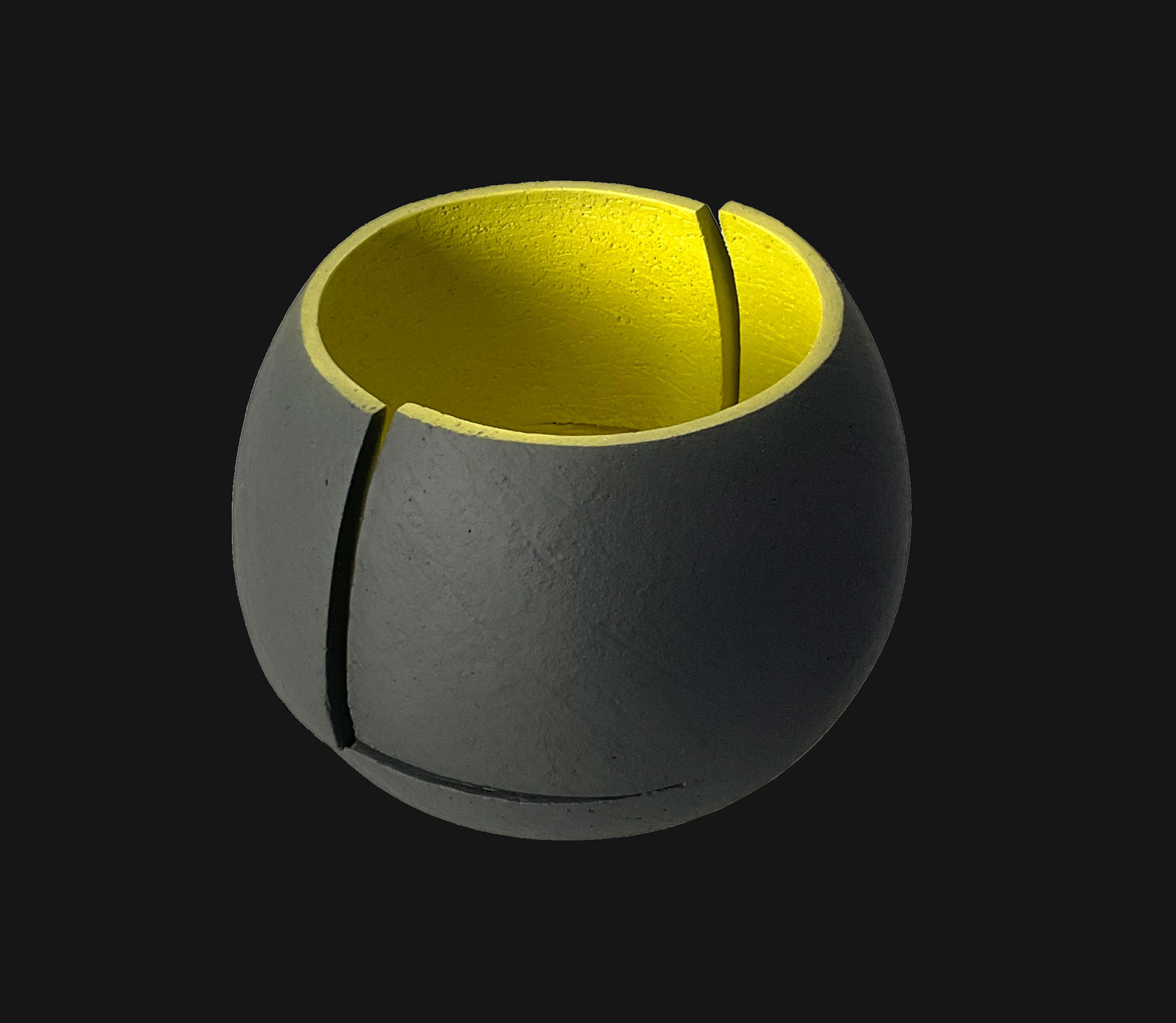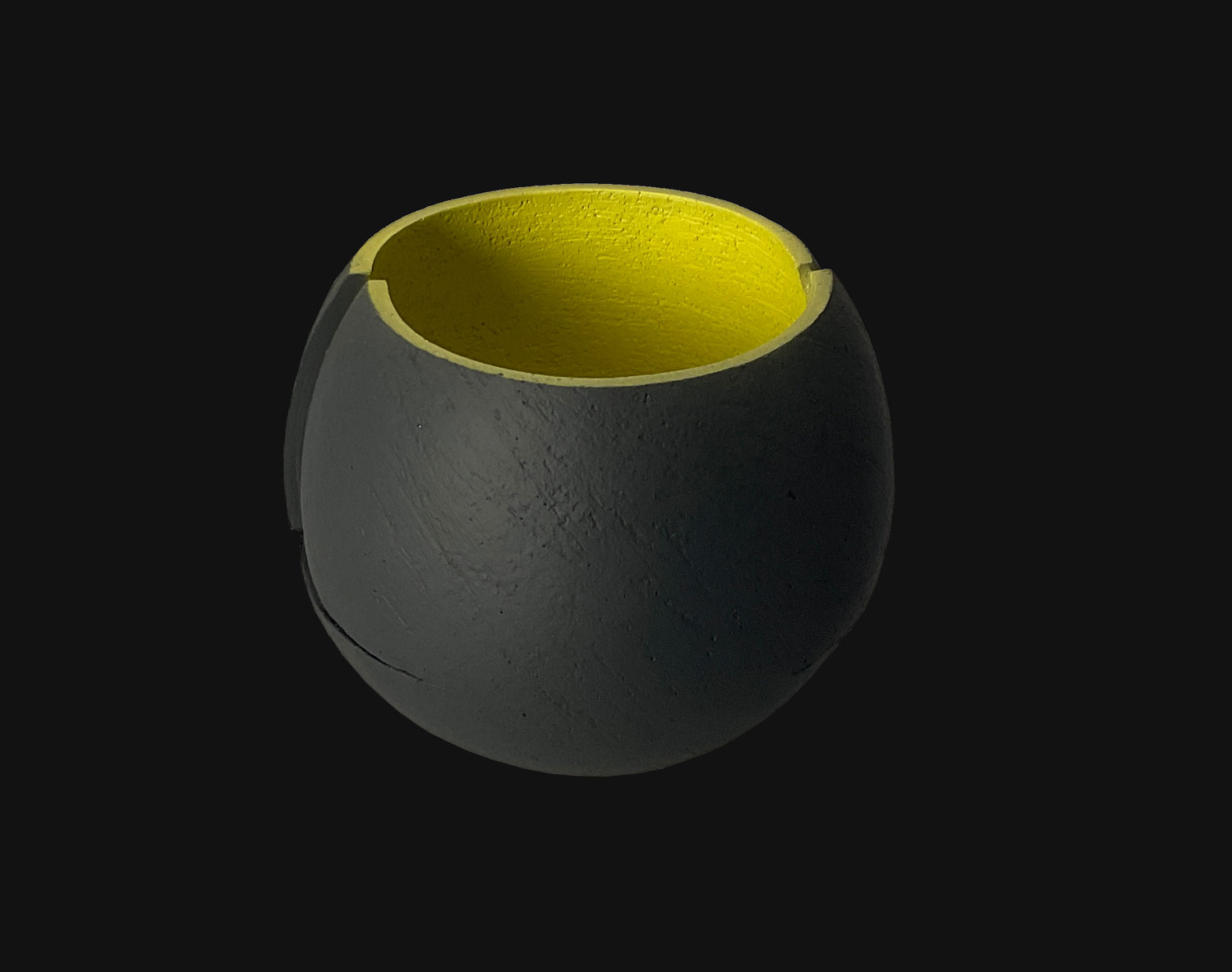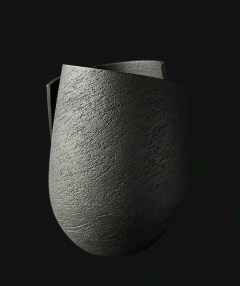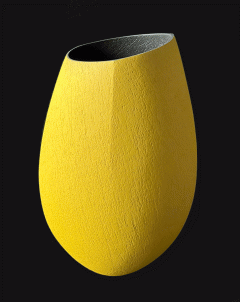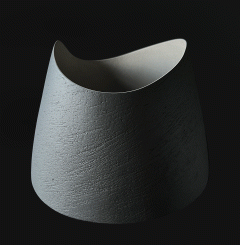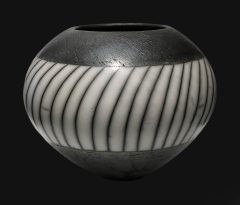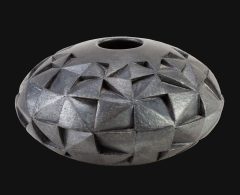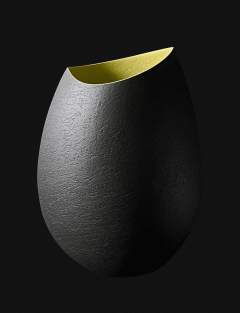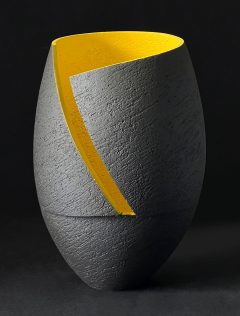Description
Ashraf Hanna – Small Cut & Altered Vessel
Artist: Ashraf Hanna
Type: Small Black & Yellow Cut & Altered Vessel
Size: 11cm Tall
An elegant hand-built vessel, textured and fired to a mid-earthenware temperature with a finish of coloured terra sigillata slip. The form examines changing design dynamics through carefully considered cuts and interventions, and contrasting colour combinations.
Ashraf Hanna – Small Cut & Altered Vessel
CLICK HERE TO VIEW OTHER WORKS BY ASHRAF HANNA
_______________________________________________________
ARTISTS STATEMENT.
I am an Egyptian born British artist, currently resident and working from my studio in Pembrokeshire, West Wales.
Growing up in Egypt I was surrounded by pottery forms that have changed little since the ancient times. Classical forms that have filtered through the ages, touched and formed by the hand of the potter. These forms were functional storage jars and water cooling urns. It was not however until I went to El Minia College of Fine Arts that I started to really look at them. Close observation during drawing classes of still life compositions opened my eyes to the beauty and contentment that exist within a well considered and executed form.
Drawing is fundamental in training our eyes to see, however the action of trying to pick up a line from a three dimensional object and marking it down on a paper is a powerful gesture that surpasses the basic skill. A projection of a line that becomes etched in our psyche as we forge an emotional and intellectual bond with such object.
The long hours spent in the drawing studio not only developed the skill needed to make a mark but, more importantly, it was a time of meditation, allowing me to free my mind from preconceptions that normally govern our perception of functional pottery. It had become increasingly obvious that objects derive their value not only from certain inherent qualities and attributes but, crucially, also from how we relate to them in a particular context. This has initiated and shaped my relationship with pottery forms ever since, seeing them as a vehicle of creativity worthy of contemplation.
Touch
When I enjoyed drawing pots back in Egypt, it never occurred to me that I would be making them.
The mark making is now a direct interaction between the hand and a lump of clay. Therefore fingers are no longer just used to hold the pencil but to exact an immediate gesture manipulating the solid mass of clay.
They become tools that are hard wired directly to our brains, forming, touching and sensing, creating a voluminous form. Containers of material, thoughts and emotions.
These very tools – our fingers – become an integral part of appreciating ceramics forms when we approach them as an audience. They connect both maker and observer.
The vessel has evolved from its basic function to contain, to become a vessel of mans’ creativity. In surpassing functionality vessels have invited a more poetic and meditative approach to making.
When we make, the physicality of an object is a manifestation of thoughts and emotions that we experience. A celebration of the marriage of ideas and skill. An object in my opinion should have a physical presence that invites a response on a number of levels, emotional as well as intellectual.



